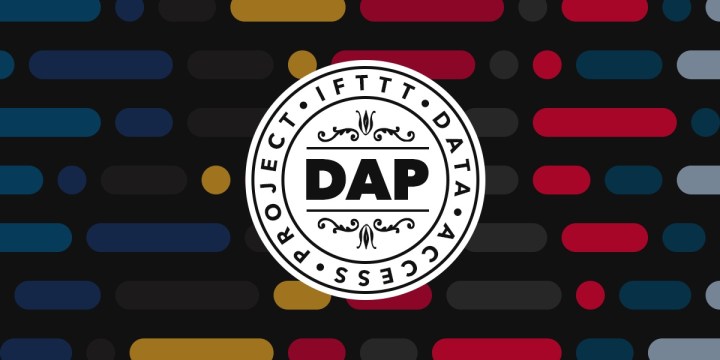
On Thursday, IFTTT announced the Data Access Project, a program that seeks to make public data from more than 35 federal and state agencies more accessible, manipulable, and shareable across devices.
It builds on the foundation of IFTTT’s partnerships with ProPublica and the city of Louisville, Kentucky, and IFTTT’s native integration with RSS feeds. Starting Thursday, it’s flipping the switch on dozens of public data sources across wide-ranging categories, including the Library of Congress, National Science Foundation, Energy Information Association, and more.
New research-focused IFTTT apps let you keep abreast of new discoveries from the American Psychological Association. Military and cyber security tie-ins blow open the doors to the Department of Defense and Homeland Security, via the U.S. Computer Emergency Readiness Team and the National Vulnerability Database. And travel and health integrations feed real-time updates from the U.S. Department of State, World Health Organization, United Nations Office on Drugs and Crimes, Center for Disease Control and Prevention, and the United States Department of Agriculture to your IFTTT hub.

“There are hundreds of open feeds sharing valuable, interesting data. But discovering and using that data hasn’t been so simple — until now,” IFTTT said. “Applets are an incredibly powerful way to interact with data. So, to empower our users and partners, we decided to seek out valuable public feeds and give them a presence on IFTTT.”
The Data Access Project follows on the heels of IFTTT’s expanded Applet program. Applets, or pre-configured connections users can enable with the flick of a switch, work with any service, including Philips Hue and BMW Connected. Developers can post them on a public profile page where they can showcase their Applets. And in the near future, IFTTT’s partners will be able to feature Applets built by makers on pages of their own.
“We’re constantly thinking about how access is handled today — and when to grant access. Users and services are at the same negotiating table,” CEO Linden Tibbets told Digital Trends in May. “They both have a say in how data can move. We want to make better use of the services and connections that you already have.”


